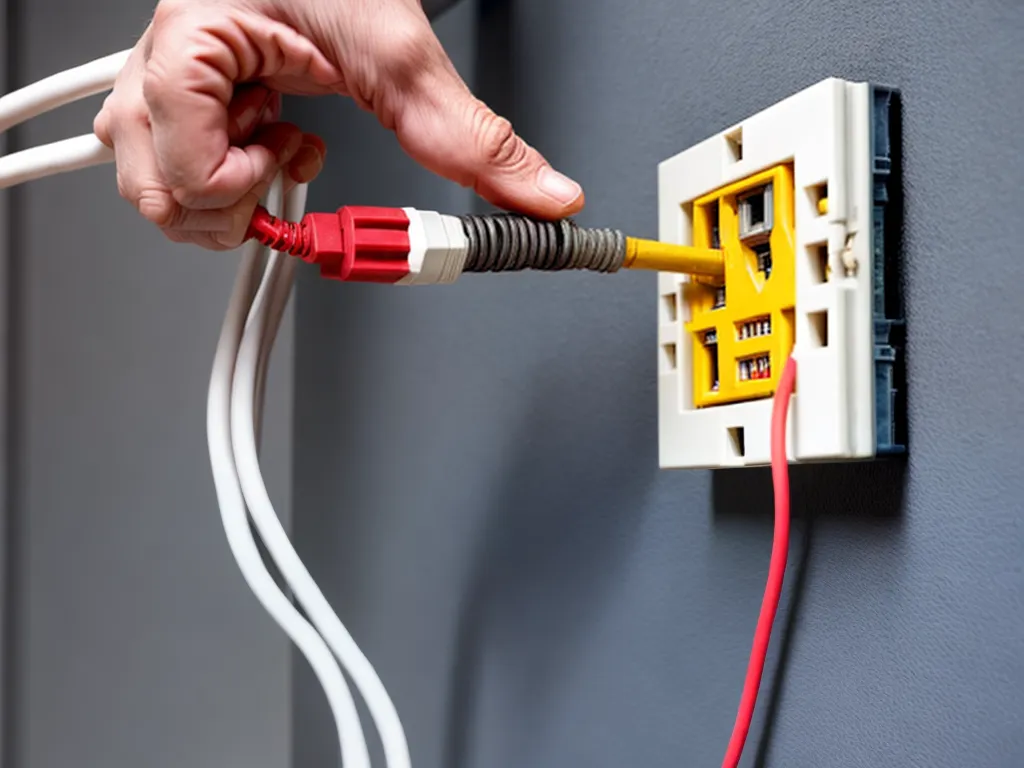
How to Safely Splice Home Electrical Wires
Introduction
Splicing electrical wires in your home can be a daunting task if you've never done it before. However, with the right materials, safety precautions, and step-by-step instructions, anyone can learn to safely splice electrical wires. This guide will walk you through everything you need to know to make secure electrical connections in your home.
Safety Precautions
When working with electrical wires, safety should always be your top priority. Here are some key safety tips to keep in mind:
- Turn off the power at the circuit breaker before doing any work. Verify power is off by testing wires with a non-contact voltage tester.
- Wear insulated gloves and safety goggles for protection.
- Only work on wires when they are completely dead and de-energized.
- Keep a fire extinguisher nearby in case of accidents.
- Inspect wires for damage before splicing. Replace damaged wires.
- Never touch exposed wires or ends with your bare hands.
Following basic electrical safety will help prevent shocks, burns, and other injuries.
Gather the Right Supplies
You'll need a few basic supplies for any wire splicing job:
- Wire strippers - For stripping insulation off wires
- Needle nose pliers - For bending and maneuvering wires
- Electrical tape - For insulating splices
- Wire nuts - For fastening wires together
- Electrical box - If you're installing a new wire splice
- Heat shrink tubing - Optional, helps reinforce splices
Make sure all tools are properly insulated to prevent shocks. Avoid using makeshift tools.
Preparing the Wires
-
Use your wire strippers to remove 3/4" of insulation from each wire end you'll be splicing. Take care not to nick or damage the copper wire underneath.
-
Twist the stranded copper wires tightly together between your fingers. This ensures a compact connection.
-
If wires are corroded or damaged, cut back further until you reach clean wire. Damaged wires should always be replaced.
-
Align wires precisely so that their ends are stacked neatly together. This helps the splice make good contact.
Connecting Wires
-
Place appropriately sized wire nuts over one wire end. Match the wire nut size to the gauge of the wires.
-
Wrap the second wire around the first, ensuring that stripped ends overlap completely.
-
Tighten the wire nut firmly until resistance is felt. Tug wires gently to verify a tight connection.
-
Optional - For additional strength, slide heat shrink tubing over the nut and apply heat to shrink it.
-
Carefully bend wires into an electrical box, if applicable. Do not stress the splice.
Finishing the Job
-
Use electrical tape to insulate the final splice. Cover the entire nut and exposed wires. Wrap tape tightly.
-
For new wires, securely fasten into electrical boxes with cable clamps. No bare wire should be exposed.
-
Restore power at the breaker and test operation. Turn power back off if the splice doesn't perform properly.
-
Put caps on any open electrical boxes. Close panels on completed jobs. Never leave exposed live wires.
-
Clean area and store supplies properly when finished.
Splicing wires is straightforward with good preparation and materials. Follow these steps carefully during any home electrical project. Patience and caution will ensure safe, lasting wire splices.